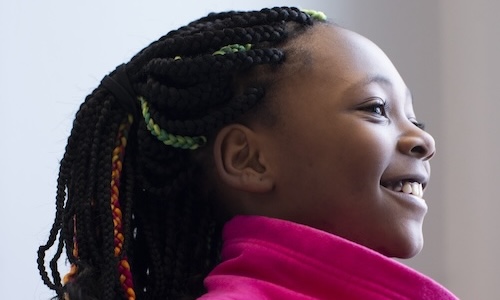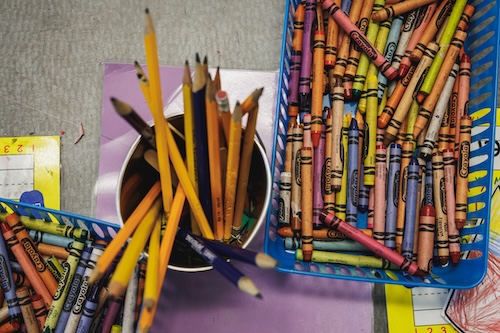
As our nation’s educators remain hard at work trying to move the needle for students who have not yet rebounded from COVID-19 impacts on schooling, we’re hit with difficult news: older students’ pandemic recovery has stalled.
Last year, NWEA researchers reported encouraging signs that the nation’s education system was bouncing back; students showed gains on MAP® Growth™ in reading and math at a rate that was comparable to pre-pandemic times. This year, though, new research shows that while students are still learning and growing, their rate of academic growth has not been as fast as before the start of COVID-19.
Schools have been working hard to address students’ needs with high-dose tutoring, enrichment classes, and after-school learning opportunities. Given the devastating impact of the pandemic on students and families, we knew recovery was going to take time, though we had hoped for continued progress.
Schools, with the support of federal and state policy leaders, will continue the hard work and their commitment to help students catch up after a difficult three years.
Students are learning, but at a slower pace
The federal pandemic emergency declaration is over, but COVID-19 impacts on students’ reading and mathematics achievement persist.
NWEA researchers Karyn Lewis and Megan Kuhfeld recently analyzed the MAP Growth scores of 6.7 million US students in grades 3–8 in about 22,000 public schools. They compared the achievement and growth of students from the beginning of the 2020–21 school year to the end of the 2022–23 school year to the achievement and growth of a similar group of 11 million students who tested in the 2016–17, 2017–18, and 2018–19 school years. The big-picture finding is that in nearly all grades, the achievement gains during 2022–23 were less than in the pre-pandemic period.
The good news is that the growth rate trends in 2022–23 for the youngest students exceeded or mirrored the trends of the pre-pandemic cohorts. In reading, third graders’ learning gains exceeded typical growth by 4%, and fourth-grade growth rates slipped slightly by 1%. In mathematics, third graders’ growth rates exceeded typical rates by 2%, while fourth graders’ gains lagged pre-pandemic growth trends by 7%. Unfortunately, middle school achievement gains lagged furthest behind, falling short of pre-pandemic averages by 16% to 19% in reading and by 6% to 10% in mathematics.
Lewis and Kuhfeld estimate that the kids who were eighth-graders in the 2022–23 school year will need an extra 9.1 months of learning in mathematics and 7.4 months of learning in reading to catch up to pre-pandemic achievement levels. These students are entering their freshman year of high school needing to accomplish almost five years of learning before they graduate from high school four years later.
Seventh-graders will need an estimated 5.9 months of school to recover learning losses in both subjects, and sixth-graders will require four additional months in reading and 3.5 months in mathematics. Even with growth rates in 2022–23 that were more consistent with pre-pandemic trends, third- and fourth-graders will still need between 1.6 and 2.6 months of extra instruction.
The research also found that marginalized students’ pandemic recovery has been slow, especially in middle school. In mathematics, Black and Hispanic middle schoolers of all grades will need more months in mathematics (6.2 and 6.4, respectively) than Asian and white students (4.3 months and 5.3 months, respectively). In reading, white, Black, and Hispanic students need additional time (4.9 months, 4.9 months, and 6.7 months) than Asian students (1.4 months). The disparities are not as stark at the elementary school level.
Where do we go from here?
This new research on COVID-19 impacts is surprising and disheartening. Since the beginning of COVID-19, districts and schools have confronted staffing challenges, intervention implementation delays, and political debates. Given this context, recovery efforts have been understandably slow to start and scale. Schools are working hard to aid students’ academic recovery, but addressing the gaps from the findings detailed above will take sizable and sustained resources and efforts in the coming years, from all levels of the education ecosystem.
The federal government has invested billions of dollars that have been essential in addressing recovery efforts. When those vital funds expire, schools will need continued investments to intensify and sustain consistent momentum toward academic recovery. Federal policymakers must do more to ensure those funds continue and districts have the resources to continue to scale interventions and programs that support student recovery. At the state and district levels, here are three considerations for policymakers and education leaders as they refine or jump-start new recovery efforts.
1. Use local data to guide recovery and invest in what works
Data exists in many forms. It comes from assessment results at the school and district levels. Data is also available on key factors, such as enrollment, attendance, and mental health. It’s essential that all data is timely and provides insight into how to improve classroom practice and address students’ specific in-school and out-of-school needs.
States and districts can set up processes and tools that provide capacity to schools when gathering data and tracking the implementation of interventions. This information can help them understand how the interventions are improving student outcomes and how they can shift intervention implementation to better support student recovery. Gathering data on student learning and recovery will allow states, districts, and schools to maintain the most effective interventions and provide the necessary resources to do so until students are fully back on track.
2. Expand instructional time by deploying evidence-based interventions and programs to the students who still need additional support
Interventions and programs must be scaled to the size of the challenge, and students in need of additional support may require multiple interventions to fully recover from COVID-19 impacts. Gaps for older students as documented in our research—and replicated elsewhere by other researchers using different assessments—will require a significant suite of interventions that match the magnitude of the crisis.
State networks have identified how to improve student learning in after-school programs. The RAND Corporation has identified the characteristics of successful summer learning programs. These programs can create engaging and enriching learning opportunities in out-of-school time to put students on the path to recovery.
Last school year, we saw that many districts faced challenges when implementing interventions. Some of the challenges districts faced included:
- A disconnect between district identification of students in need of interventions and which students actually received interventions
- Hiring enough staff to provide the interventions
- Finding the time or space to deliver interventions
State and district leaders can work with schools to develop policies and practices that ensure schools are able to implement interventions efficiently and effectively, such as by providing data coaching to schools, developing a menu of interventions, and building intervention programs for long-term sustainability.
3. Communicate the importance of academic recovery, sharing timely and relevant information with families
Educators see COVID-19 impacts in their classrooms every day, but families often don’t understand the magnitude of the pandemic’s influence on students’ academic progress. A recent Pew poll found that over half of families believed the pandemic had only a temporary effect on a child’s education. Closing that “perception gap” between schools and families would aid district recovery efforts that in too many places are falling short of their goals in terms of reach, intensity, and impact.
Additionally, states, districts, and schools can provide families with timely information about their child’s progress and achievement compared to grade-level standards. They should also share resources and tools families can use to support learning recovery at home.
Continue to focus on academic recovery
Data from the 2022–23 school year is concerning and shows that COVID-19 impacts may be longer lasting than expected. We must work quickly to address the gaps that exist for students. Today’s students are our future workforce, and if current recovery trends continue, some kids may not recover before they end their public school education.
The task ahead appears to be daunting, but we’re confident that our nation’s schools have the tools, know-how, and commitment to overcome the pandemic’s impact on student achievement. But they need significant and sustained support from state and federal policymakers to ensure our nation’s students can make a full academic recovery.







